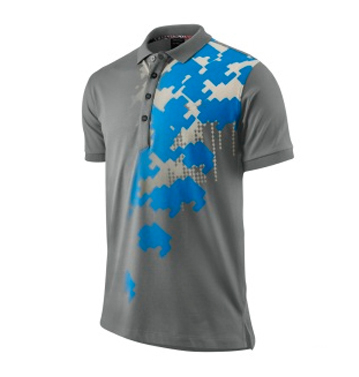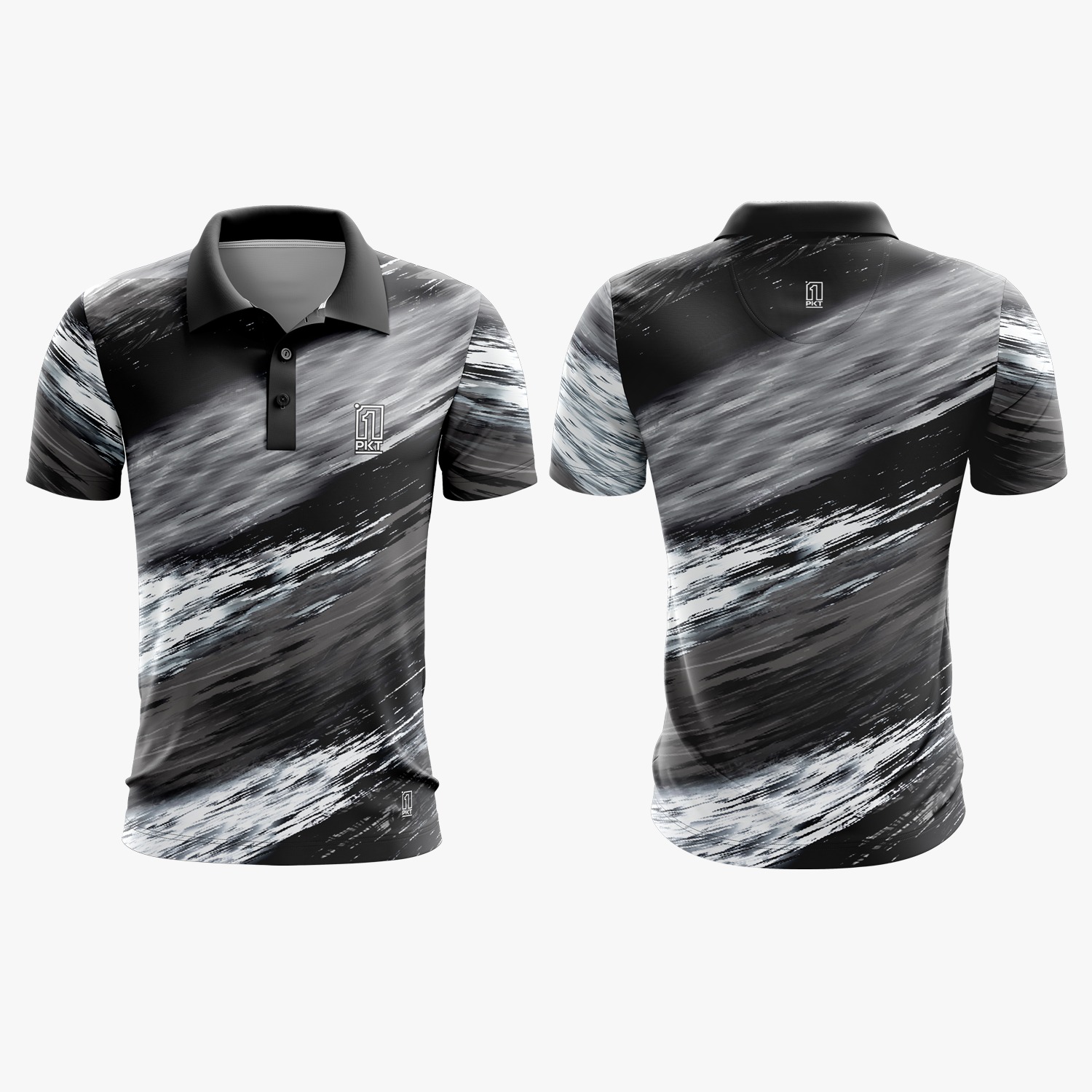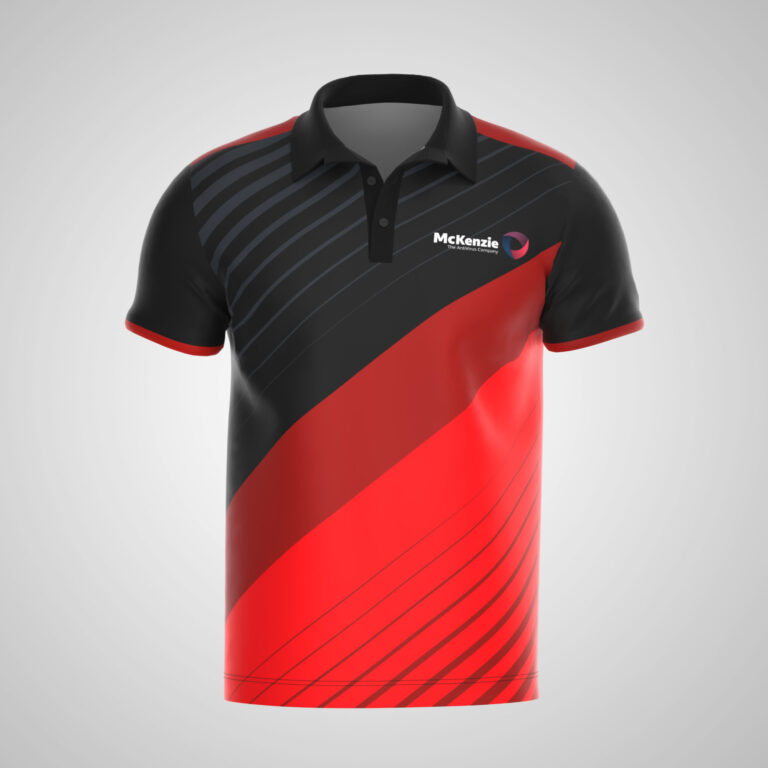Polo shirts are a timeless staple, offering a perfect blend of casual comfort and smart-casual sophistication. When it comes to customizing them, sublimation printing stands out as a superior method, especially for those seeking vibrant, durable, and truly integrated designs. But what if your vision leans away from bold, multi-color graphics and towards something more understated, elegant, and versatile? Enter the power of gray. Gray designs on polo shirts offer a unique aesthetic – modern, professional, and incredibly adaptable. This comprehensive guide will walk you through everything you need to know about getting fantastic gray images for your sublimation polo shirt designs, ensuring your creations are nothing short of spectacular.
Why Sublimation is Perfect for Polo Shirts
Before diving into the nuances of gray, let's quickly touch upon why sublimation is the go-to method for customizing polo shirts. Sublimation printing involves a unique process where special inks, when heated, turn directly from a solid into a gas. This gas then dyes the polyester fibers of the fabric, becoming a permanent part of the garment. Unlike screen printing or heat transfers that lay ink on top of the fabric, sublimation infuses the design into it. This results in a design that won't crack, peel, fade, or wash out, maintaining the fabric's original feel and breathability. For polo shirts, which are often worn for active or semi-formal occasions, this durability and comfort are invaluable.
The Unsung Hero: Why Choose Gray for Your Polo Designs?
While bright colors often grab immediate attention, gray possesses an understated charm that makes it incredibly powerful in design. It’s not just a lack of color; it’s a spectrum of sophistication, versatility, and modernity. Here’s why gray is an excellent choice for your sublimation polo shirt designs:
- Versatility: Gray pairs effortlessly with virtually any other color. It can act as a neutral base, a subtle accent, or even the dominant color, allowing for diverse styling options.
- Sophistication & Professionalism: A well-chosen shade of gray instantly elevates a design, lending it a professional and refined look, perfect for corporate uniforms or upscale casual wear.
- Modern Aesthetic: Gray is a cornerstone of minimalist and contemporary design. It conveys a sense of sleekness and understated elegance that is always in vogue.
- Texture & Depth: Different shades and patterns of gray can create incredible visual texture and depth, making a design feel more complex and engaging without being overwhelming.
- Gender Neutrality: Gray is universally appealing, making it a safe and stylish choice for designs intended for a broad audience.
Getting Your Gray Images Right: The Design Process
Achieving stunning gray sublimation designs requires careful attention to detail, from initial concept to final print. Here’s how to ensure your gray images are perfect:
1. Choosing the Perfect Shade of Gray
Gray isn't just one color; it's a vast spectrum. The right shade can dramatically impact the final look. Consider these factors:
- Warm vs. Cool Grays: Grays with a hint of blue or green are "cool," while those with a touch of yellow or brown are "warm." Cool grays often feel more modern and crisp, while warm grays can feel more inviting or earthy.
- Light vs. Dark: A light silver-gray offers a subtle, ethereal feel, while a deep charcoal or slate gray provides strong contrast and a bolder statement.
- Polo Shirt Base Color: Sublimation works best on light-colored (ideally white) polyester fabrics. If your polo is a very light gray, a darker gray design will stand out. If it's white, you have the full spectrum to play with. Remember that sublimation inks are transparent, so the fabric color will show through.
- Color Values: Use specific CMYK or Pantone values for consistency, especially if you're matching brand guidelines. For example, a CMYK value of C:0 M:0 Y:0 K:50 gives a medium neutral gray.
2. Image Resolution and Quality
This is paramount for any sublimation project. Low-resolution images will result in pixelated, blurry designs, especially on a larger surface like a polo shirt.
- DPI (Dots Per Inch): Always aim for 300 DPI at the final print size. If your image is 72 DPI, it will look fine on a screen but terrible when printed.
- Vector vs. Raster: For logos, text, or geometric patterns, vector graphics (like those created in Adobe Illustrator) are ideal because they can be scaled infinitely without losing quality. For photographic elements or intricate textures, high-resolution raster images (like JPEGs or PNGs from Photoshop) are necessary.
3. Selecting the Right File Formats
The file format you use can affect the quality and transparency of your gray images.
- PNG: Excellent for designs requiring transparent backgrounds, which is often the case for logos or graphics placed on a polo. It supports high resolution and a wide color range.
- JPG: Suitable for full-bleed images (where the design covers the entire print area) or photographic elements. Be mindful that JPGs do not support transparency.
- PDF/EPS: Ideal for vector graphics, offering scalability and crisp lines.
4. Leveraging Design Software for Gray Mastery
Professional design software gives you precise control over your gray images:
- Adobe Photoshop: Perfect for manipulating raster images, adjusting gray tones, adding textures, and converting images to grayscale. Use adjustment layers for non-destructive editing.
- Adobe Illustrator: The go-to for vector graphics. Create sharp logos, intricate patterns, and typography in various shades of gray.
- CorelDRAW / Affinity Designer: Strong alternatives offering similar capabilities for both vector and raster work.
- GIMP (Free): A powerful open-source option for raster image manipulation, including grayscale conversion and tone adjustments.
When working with grays, pay attention to color modes (CMYK for print), contrast, and how different shades interact within your design. A subtle gradient from light to dark gray can add incredible depth.
5. Creative Gray Design Ideas for Polos
Think beyond a simple solid gray. Here are some ideas:
- Textured Grays: Incorporate patterns like brushed metal, concrete, woven fabric, or subtle noise for added interest.
- Geometric Abstractions: Use different shades of gray to create compelling geometric shapes and patterns.
- Grayscale Photography: A well-chosen grayscale photograph can be incredibly striking on a polo, offering a vintage or artistic feel.
- Monochromatic Schemes: Combine various shades of gray (and black/white) for a sophisticated, unified look.
- Gray with a Pop of Color: Use gray as the dominant color and introduce a single, vibrant accent color for a modern, impactful design.
- Subtle Gradients: A gentle fade from one shade of gray to another can create a dynamic yet understated effect.
The Sublimation Printing Process: A Quick Overview
Once your gray image is perfectly designed, the printing process is the next crucial step:
- Print Your Design: Use a sublimation printer loaded with sublimation inks and print onto special sublimation transfer paper. Ensure your design is mirrored before printing!
- Prepare the Polo: Place your polyester polo shirt on a heat press. Ensure it's clean and wrinkle-free.
- Position the Transfer: Carefully place the printed sublimation paper face down onto the polo shirt. Use heat-resistant tape to secure it if needed to prevent "ghosting."
- Heat Press: Apply heat, time, and pressure according to your sublimation paper and ink manufacturer's recommendations (typically around 380-400°F for 45-60 seconds).
- Reveal: Once the pressing cycle is complete, carefully remove the transfer paper to reveal your stunning gray design infused into the polo shirt.
Common Pitfalls to Avoid
Even with the best intentions, issues can arise. Be mindful of:
- Low-Resolution Images: As mentioned, this is the biggest culprit for poor print quality.
- Incorrect Color Profiles: Ensure your design software is set to CMYK for print, not RGB (which is for screens). Grays can shift unexpectedly if color profiles aren't managed correctly.
- Non-Polyester Fabrics: Sublimation only works effectively on polyester or poly-coated items. Cotton or natural fibers will not absorb the dye.
- Heat Press Issues: Uneven pressure, incorrect temperature, or insufficient time can lead to faded, incomplete, or uneven transfers.
- Ghosting: If the transfer paper shifts during the heat press process, it can create a blurry, "ghosted" image. Use spray adhesive or heat-resistant tape to prevent this.
Final Thoughts
Gray sublimation designs for polo shirts offer a world of creative possibilities, blending sophistication with modern appeal. By understanding the nuances of gray, mastering your design software, and following best practices for sublimation printing, you can create custom polo shirts that are not only visually striking but also incredibly durable and comfortable. Embrace the elegance of gray, experiment with textures and shades, and watch your polo shirt designs transform into wearable works of art.
This article has covered the importance of high-quality gray images, the selection of appropriate gray shades, essential design software techniques, and a brief overview of the sublimation process. We also highlighted common mistakes to avoid, ensuring your journey into gray sublimation is smooth and successful. Now, go forth and design some truly amazing gray polo shirts!




